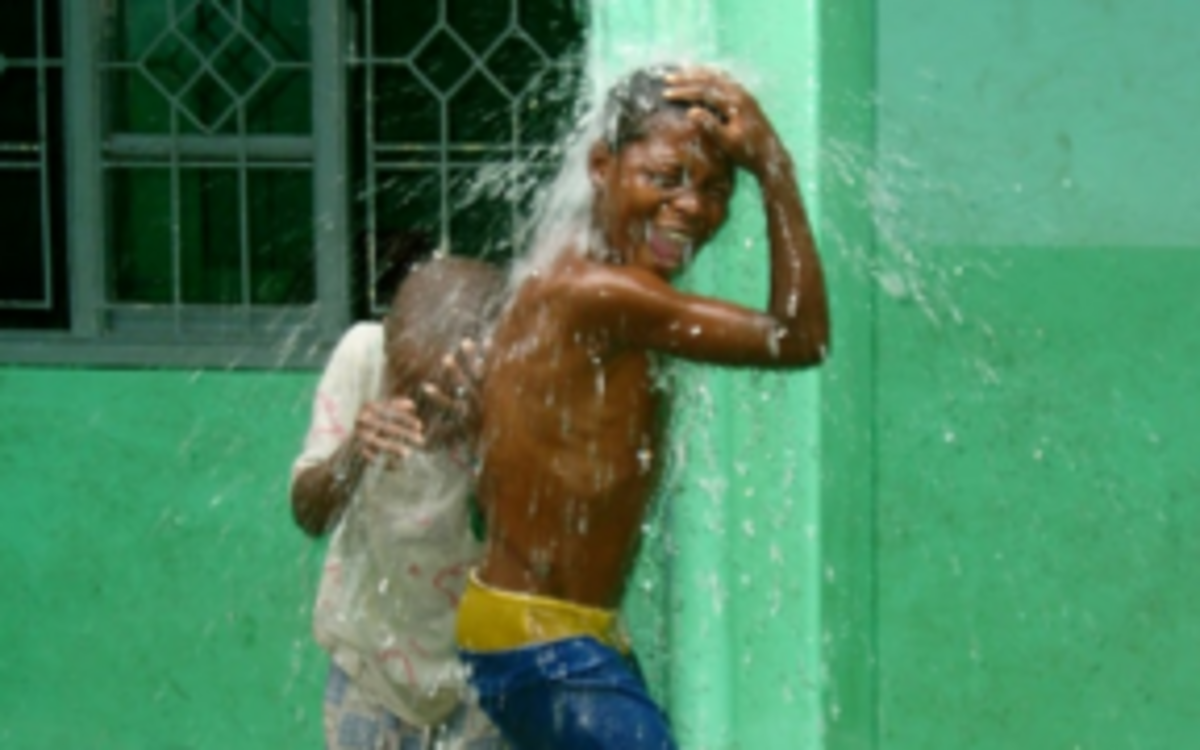The SDG 6 Synthesis Report 2018 on Water and Sanitation outlines the global status of SDG 6 (Ensure availability and sustainable management of water and sanitation for all) and other water-related targets, and what needs to be done to achieve the Goal by 2030. It represents a joint position of the United Nations (UN) family on the global status on SDG 6 and other water-related targets.
The JRC contributed to this high-level report with findings from its Global Surface Water Explorer (which shows the change in surface water over time) and the concept of the "Water footprint” of different diets (which shows the water use involved in different diets, and highlights the interdependency of the 17 SDGs).
The report concludes that the world is not on track to achieve the global SDG 6 targets by 2030 at the current rate of progress. It makes clear that we need to tackle weak funding, planning, capacity and governance of water and sanitation services as a top priority. The time to act on SDG 6 is now.
SDG 6: Clean Water and Sanitation
Billions of people still lack access to safe water and sanitation, demand for water is rapidly rising, and increasing amounts of untreated wastewater are added to water pollution and ecosystem degradation. This is all happening against a backdrop of climate change, which is playing havoc with the predictability of our most precious resource.
There are eight global targets under SDG 6, whose progress is tracked by 11 global indicators. The SDG 6 Synthesis Report is based on the latest data available for these indicators, and also explores the linkages within and between the targets and indicators of SDG 6 and the other SDGs.
JRC contribution
The JRC's Global Surface Water Explorer (GSWE), which uses Earth observation to map over three decades of global surface water, was used to monitor progress towards target 6.6 (Protect and restore water-related ecosystems) by means of indicator 6.6.1 (Change in the extent of water-related ecosystems over time), for which the United Nations Environment Programme (UNEP) is the custodian agency.
The report specifically recognises the use of Earth observations in its key messages on target 6.6, in which it states that: "… monitoring changes to water-related ecosystems can be supported using Earth observations. Such global data have a significant role to play in supporting countries in monitoring and reporting on indicator 6.6.1."
The chapter “Beyond Sustainable Development Goal 6”, which explores how SDG 6 connects with other SDGs, includes a case study based on JRC input entitled '“Water footprints” in food – a useful concept linking diets with water'. This contribution shows how water footprints can be used to highlight the large amount of water consumed in producing food, and how shifting to a healthy diet can have major benefits.
This also gives a good example of the interdependency of SDG 6 (Water) with SDG 2 (Food security) and SDG 3 (Good Health and Well-Being, in particular, SDG 3.4: By 2030, reduce by one third premature mortality from non-communicable diseases through prevention and treatment and promote mental health and well-being).
UN High-level Political Forum 2018
Every year, at the High-level Political Forum (HLPF), UN Member States follow up and review progress towards the 17 SDGs and 169 global targets set by the 2030 Agenda, provide guidance and recommendations for follow-up actions.
SDG 6 is one of the six Goals to be reviewed at this year's HLPF (9-18 July 2018), which will be held under the theme: "Transformation towards sustainable and resilient societies".
The JRC will also be present at the HLPF, where they will make presentations of the JRC research project “Building a knowledge base on SDGs" and the “Science policy interface framework for SDGs implementation".
Further information
- SDG 6 Synthesis Report 2018 on Water and Sanitation
- Highlights – SDG 6 Synthesis Report 2018 on Water and Sanitation
- Global Surface Water Explorer
- The water footprint of the EU for different diets
- SDG 6: Ensure availability and sustainable management of water and sanitation for all
- UN High-level Political Forum 2018
Links:
- SDG 6 Synthesis Report 2018 on Water and Sanitation
- Highlights – SDG 6 Synthesis Report 2018 on Water and Sanitation
- Global Surface Water Explorer
- The water footprint of the EU for different diets
- SDG 6: Ensure availability and sustainable management of water and sanitation for all
- UN High-level Political Forum 2018
